A Photo Essay
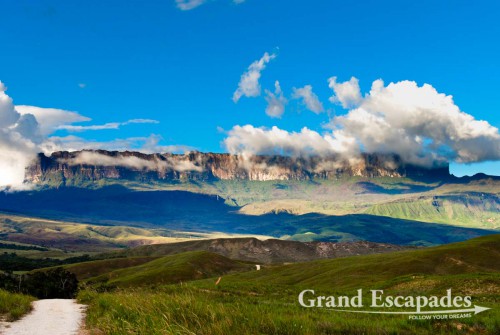
Trekking Mount Roraima, the highest Tepui or Tabletop Mountain, Venezuela – A rare view of Mount Roraima in the rain season
Trekking Mount Roraima was definitely one of the highlights of our trip in Venezuela, but it was also the toughest 6 days we ever had during a trip. This had to do with the fact that we were untrained and that the weather conditions were partly extremely difficult.
Climbing the top of the Tabletop Mountain or “Tepuí” Roraima involves 6 days / 5 nights of trekking: the first two days are relatively easy, walking through typical Gran Sabana scenery: green savannah grassland intercepted by small woods, the most pleasant and peaceful landscape to imagine. The only dark side of the Gran Sabana are the millions of “Puri Puri”, small flies that sting like mosquitoes, but are not deterred by repellents, but only long leaves and long pants. They are especially active at dusk and near rivers.
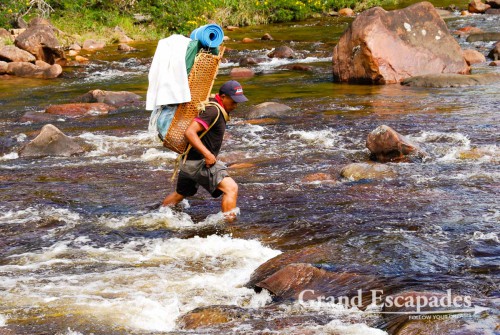
Trekking Mount Roraima, the highest Tepui or Tabletop Mountain, Venezuela – During the two first days, we had to cross two rivers … For the tourists there was a rope to hold on to, but the Indigenous just waded right through. Here a “Portero” carrying a typical “backpack” …
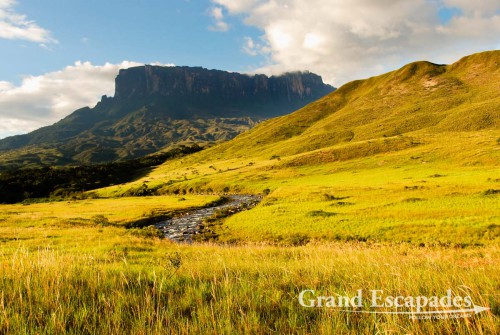
Trekking Mount Roraima, the highest Tepui or Tabletop Mountain, Venezuela – Another TepuÌ close to Mount Roraima, also almost free of clouds …
The third day starts out at the foot of the vertical cliff, with the painful ascent of “The Ramp”, a small and steep path that takes you 1.000 meters further up to the top.
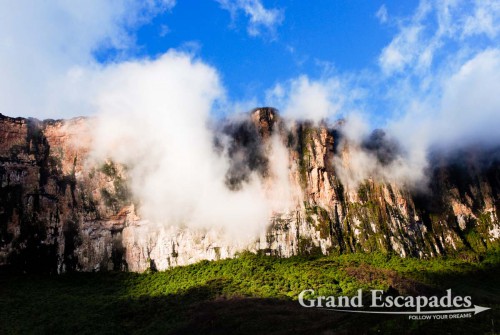
Trekking Mount Roraima, the highest Tepui or Tabletop Mountain, Venezuela – At the bottom of the cliff of Mount Roraima
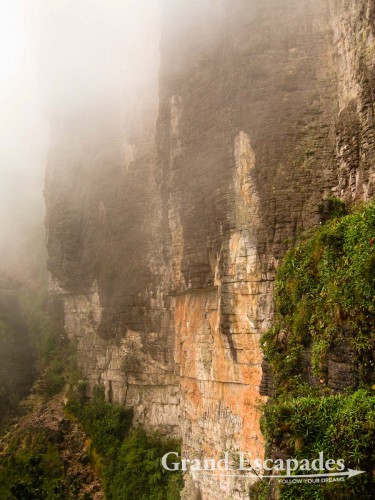
Trekking Mount Roraima, the highest Tepui or Tabletop Mountain, Venezuela – Climbing the wall of Mount Roraima
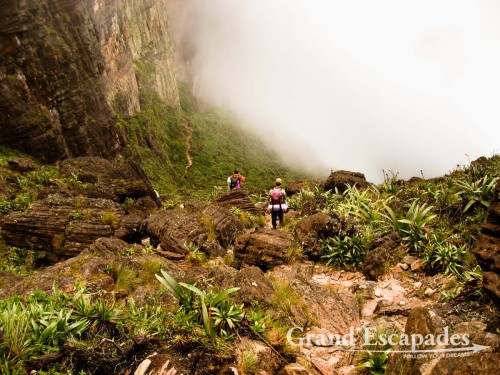
Trekking Mount Roraima, the highest Tepui or Tabletop Mountain, Venezuela – Getting down Mount Roraima … in fog and rain!
We do not want to go into depth how we felt during the way up but try to give more general information. Firstly, luckily Heidi decided the very last minute to have her backpack carried by a “Portero”, for about 14 USD or 50.000 Bolivares a day, whereas Gilles carried his 12 kilos for 6 days.
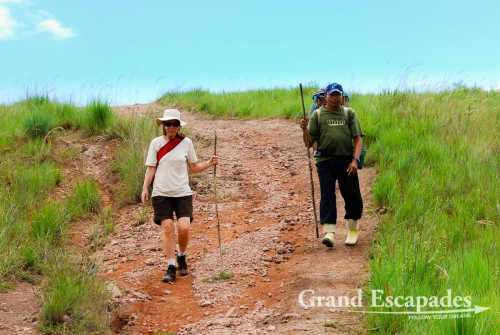
Trekking Mount Roraima, the highest Tepui or Tabletop Mountain, Venezuela – Through the Gran Sabana on the first day…
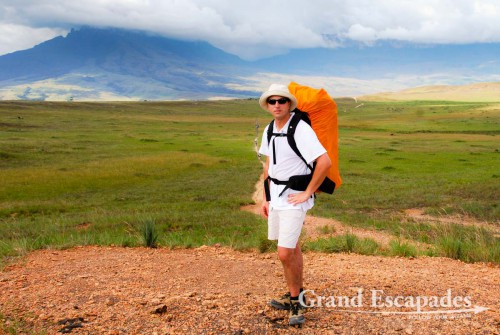
Trekking Mount Roraima, the highest Tepui or Tabletop Mountain, Venezuela – Through the Gran Sabana on the first day…
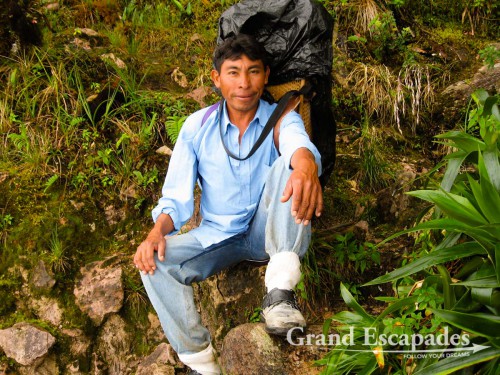
Trekking Mount Roraima, the highest Tepui or Tabletop Mountain, Venezuela – One of the “Portero”, Lorenso …
Secondly, after being up the Tepuí it is clear at least to Heidi that Mount Roraima is a destination for the dry season. We were extremely lucky to have nice weather for the first three days but were completely rained in on top. The landscape on top is a formation of rock boulders and swampy patches, and after heavy rain, the puddles between the rocks are getting bigger and the distance between the rocks wider and wider and eventually it becomes almost impossible to jump from rock to rock. Please do not forget you are doing this jumping on slippery, wet rocks! Most likely you are wearing the same clothes that you will wear during the night, since the low temperature on top during the night might require you to wear ALL your clothes.
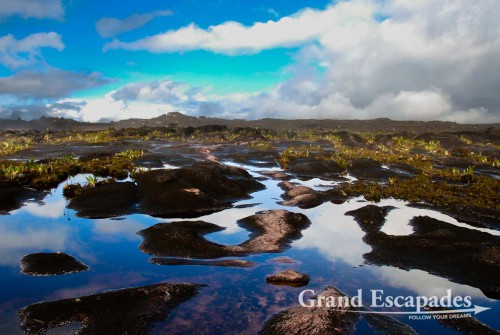
Trekking Mount Roraima, the highest Tepui or Tabletop Mountain, Venezuela – View on top of Mount Roraima with a beautifull afternoon light: rocky boulders, water, swamps and a few plants …
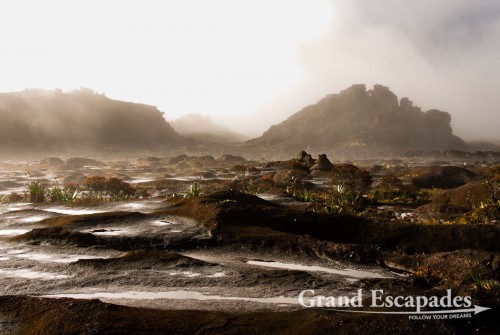
Trekking Mount Roraima, the highest Tepui or Tabletop Mountain, Venezuela – View on top of Mount Roraima …
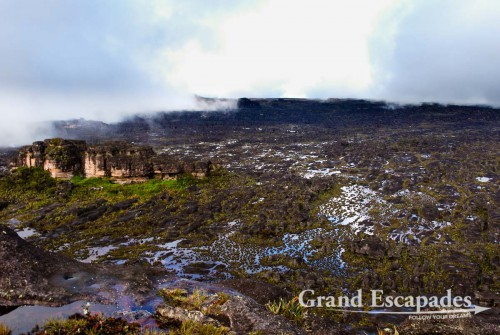
Trekking Mount Roraima, the highest Tepui or Tabletop Mountain, Venezuela – View of the top of Mount Roraima from the highest point of the Tepui …
Of course rain is part of Mount Roraima, which is usually hidden by clouds and fog. The atmosphere created by the fast moving clouds and fog is indeed fascinating but we are convinced that having a view from the top of the Tepuí and not walking under heavy rain is a lot more pleasant than the way we did it. But the scenery on top of this Tepuí is simply breathtaking and definitely worth the trekking.
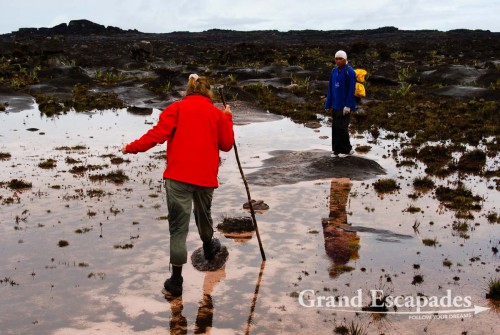
Trekking Mount Roraima, the highest Tepui or Tabletop Mountain, Venezuela – Jumping from rock to rock is the only way to trekk Mount Roraima …
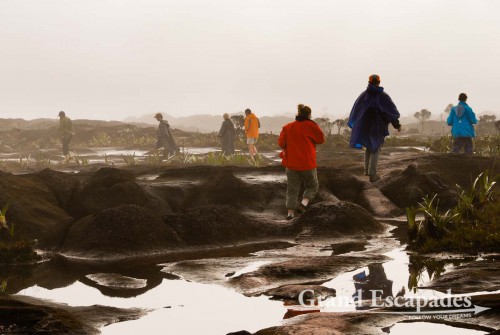
Trekking Mount Roraima, the highest Tepui or Tabletop Mountain, Venezuela – First “Caminata” on top of Mount Roraima in rain and fog …
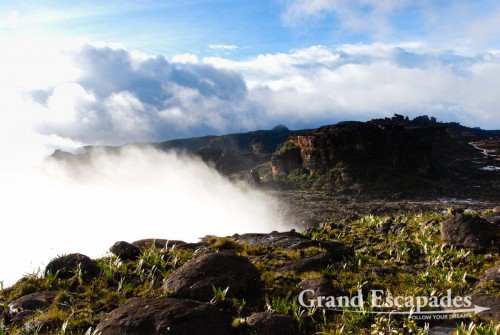
Trekking Mount Roraima, the highest Tepui or Tabletop Mountain, Venezuela – At the edge of the TepuÌ, two more steps and it goes 1.000 meters straight down!
The surface of the Tepuí Roraima is about 250km2 which is huge. Therefore, the area that most tourists explore is relatively small. Some trekkers are ambitious enough to head for “Triple Point”, the frontier between Venezuela, Brazil & Guyana, on top of Mount Roraima. It is only 9 km each way but takes 8 -10 hours of trekking, which tells you everything about the difficulties moving around. With the bad weather and limited visibility the day we spent on top, the question whether to try it didn’t even arise in our group. Instead we visited the area near our “Hotel”, which contains lots of highlights. Evening activities up the mountain are simple: at 06:30 pm you gobble down your dinner, standing up, since there is no possibility to sit down and at 07:00, latest 08:00 pm you are in your tent.
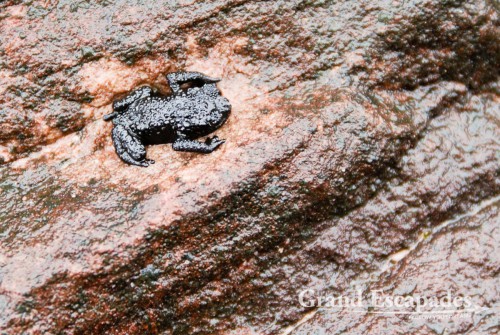
Trekking Mount Roraima, the highest Tepui or Tabletop Mountain, Venezuela – A “sapito”, or small frog, max. 3 centimeters long …
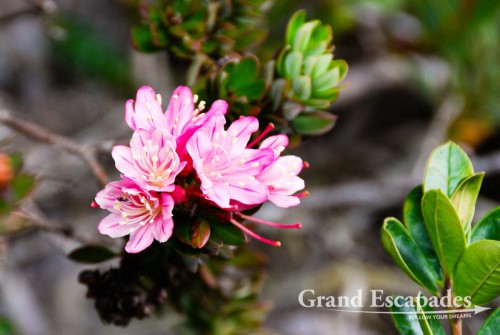
Trekking Mount Roraima, the highest Tepui or Tabletop Mountain, Venezuela – One of the typical plants on top of the mountain …
Towards the end of our day exploring the top Heidi was getting very tired and fell behind, Gilles and one of the Porteros stayed with her. At 04:00 pm we found out that we were lost, Heidi had very strong feelings. To give you a picture, at 06:00 pm it is completely dark and you are surrounded by water and rocks. In the meantime Jose was getting very worried and started searching for us, when we finally saw him standing on top of a rock waving his arms we all were so relieved.
The toughest part of the trekking is the fifth day, getting down the ramp and trekking back to Camp Tök, the camp where we stayed the first night. This means covering the same distance as day 2 and 3 and a difference in altitude of no less than 1.800 meters, a real physical challenge since getting down is also extremely tiring.
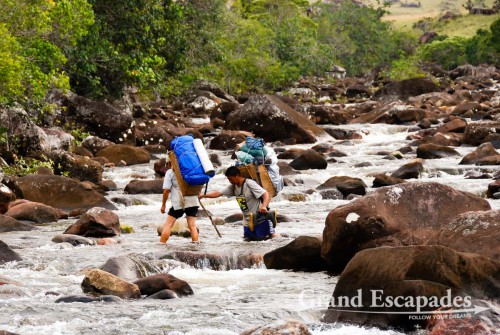
Trekking Mount Roraima, the highest Tepui or Tabletop Mountain, Venezuela – The Porteros crossed the river as they always do, even though the water level had dramatically increased …
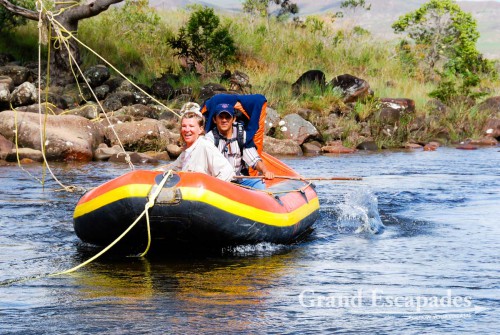
Trekking Mount Roraima, the highest Tepui or Tabletop Mountain, Venezuela – Tourists would cross the river in a boat, because the water had risen to a level where it was risky to walk across …
Apart from that, staying concentrated was crucial because every mistake / injury can turn into a major problem, since there is no security measure and no evacuation scenario whatsoever. People with an open fracture had to be taken down in hammocks, which can last up to 36 hours: the few helicopters that are available in this area are owned by private tour operators, which give priority to excursions flights instead of to rescue operations, even though a helicopter rescue costs 1.600 USD.
We followed the recommendation of several people we had met and went with Mystic Tours. This was a very good choice! First, because our guide, Jose, was outstanding – a very strong but very nice personality, very knowledgeable and extremely funny … Second, because we were in a small group only with Spanish people speaking almost only Spanish, which compelled us to work our Spanish a great deal. And last but not least for material reasons: the tents were big, carried and set up by the porters, which was not the case with another company that charged the same price. After a 5 to 8 hours walk this is definitely no luxury!
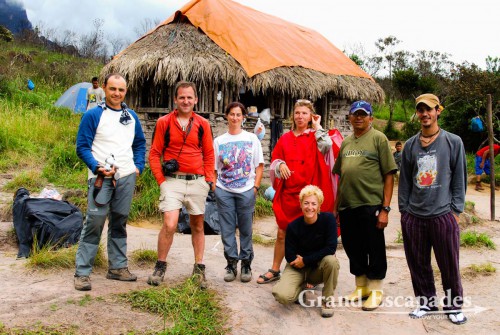
Trekking Mount Roraima, the highest Tepui or Tabletop Mountain, Venezuela – Our fellow trekkers with Jose, our guide, second from right.
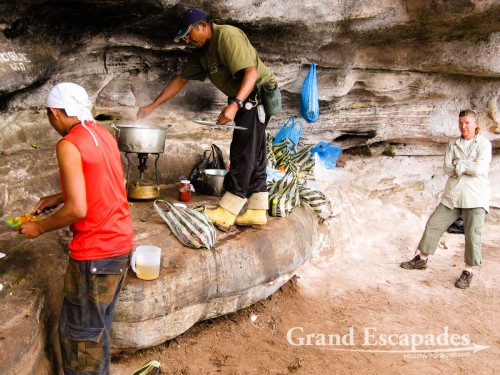
Trekking Mount Roraima, the highest Tepui or Tabletop Mountain, Venezuela – Kitchen on top of Mount Roraima, Jose is preparing dinner. The “Hotels” are places protected by overhanging cliffs, mainly against the heavy rain and partly against the wind, which are VERY common at the top of Mount Roraima …
The owner of Mystic Tour, Roberto Marreno, is studying supernatural appearances on Mont Roraima and explained us with passion why this place is so special, comparable to Machu Picchu and what not … There have been more than 200 supernatural appearances near Roraima in the last years, which Roberto Marreno all listed and analysed. At least we followed his recommendation and, as the Indigenous do, “ask the mountain for permission” before starting the trekking: “We come in peace, we come in harmony, and we ask for permission to climb the mountain”. We cannot say if it helped or not, but at least we are back in one peace …
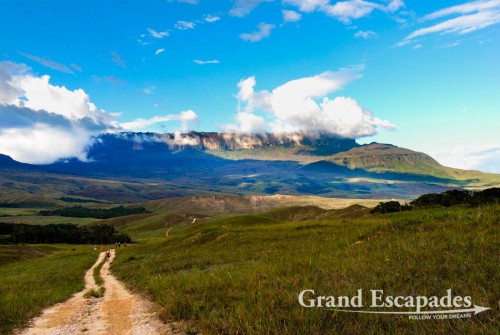
Trekking Mount Roraima, the highest Tepui or Tabletop Mountain, Venezuela – A rare view of Mount Roraima in the rain season
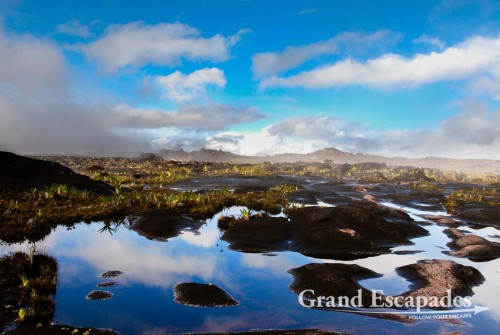
Trekking Mount Roraima, the highest Tepui or Tabletop Mountain, Venezuela – View on top of Mount Roraima with a beautifull afternoon light: rocky boulders, water, swamps and a few plants …
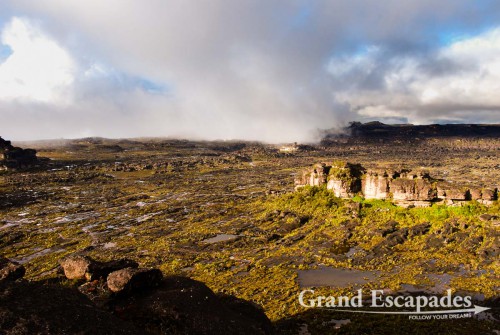
Trekking Mount Roraima, the highest Tepui or Tabletop Mountain, Venezuela – View of the top of Mount Roraima from the highest point of the Tepui …

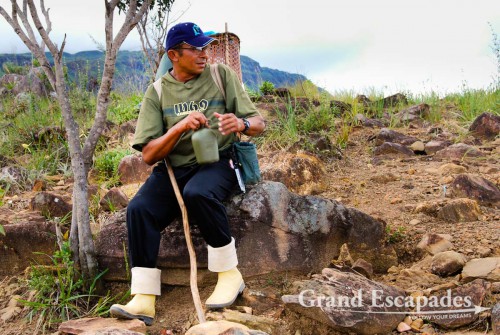
No comments yet.